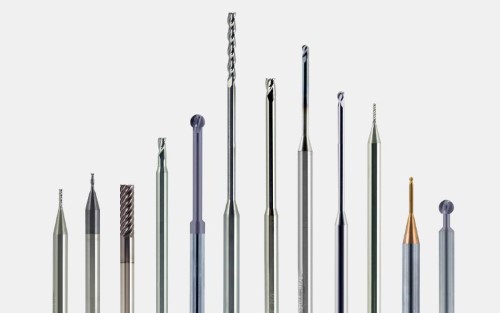AuthorWrite something about yourself. No need to be fancy, just an overview. ArchivesCategories |
Back to Blog
How To Choose End Mills9/8/2022 
It is crucial to comprehend the demands of the job and select the appropriate end mill for you. For example, if you are performing traditional roughing and slotting operations, you will need roughers with a shorter length, and a Finisher with numerous flutes. Another important aspect to consider when choosing an end mill is the correct flute count. End mills of shorter length are more robust The end mill's length is more crucial than their length. The ideal is that a longer end mill should be utilized if essential for the process. Utilize the G-Wizard Calculator determine the length of the data flute end mill bits. The type of application as well as the length of an endmill will determine its length. For applications that require shallow cutting depths, the end mills of shorter length are the most suitable. The tool stability of shorter length end mills is enhanced and permits more powerful feeds. These features minimize chatter during operation. The possibility of additional production is available with coated end mills Coated end mills will significantly increase the efficiency of your twist drill. There are a variety of coatings and some are superior than other coatings. Coated end mills can be expensive so make sure to consider price and benefits when selecting the most appropriate one. In many instances, the added machining production is well worth the additional price. End mills coated with coatings have a non-sharp edge, which is one of their primary attributes. They can cut harder materials without creating sharp edges. End mills that are coated with a coating tend to be more durable than ones that do not have a coating. This feature is particularly beneficial for stainless steel. Flutes affect chip removal rate Be aware of how flutes impact the speed of removal of chips when selecting an end mill. The material being cut will affect the number of flutes that are required. End mills generally have the form of a spiral, with the cutting edges spiraling into a screw-like design through the material. Some materials, such as plastics require a cut pattern that eliminates the most material possible but also allows for quick evacuation. The flute count and the size of the stepover are usually closely related. A stepover that is too big will generate more heat and force you lower the speed of the feed. A tool that has a lower stepover will have a greater chip removal rate however, it will take many passes to remove the same amount of material. Feed rate It is crucial to select the correct speed and feed rate when using end mills. Refer to the feed rate and speed charts supplied by the manufacturer to help. Harvey Tool, for example, provides a speed-feed rate chart for an end mill with 1/8-inch diameter. This chart shows the recommended speed and feed rates for cutting stainless steel 304. The chip load per tooth, as well as the cutting process, determines the speed and feed rate. For instance, a 1/8" diameter end mill with six flutes cut into 1/4" thick aluminum should be set to 75 RPM, with a 25 mm/s of feed. The speed and feed rate of an end mill is crucial when milling certain materials. When a roughing process is required, the speed of the mill needs to be high enough to remove huge quantities of material. The pcd end mill cutter, while not as aggressive, should be quick and have the ability to feed at a high rate. Materials choices There are many options when choosing mill end bits. Different materials need different geometry and machining techniques. Some end mills are specifically made for steel, while others are made specifically for non-ferrous materials. You can achieve the best results by selecting the appropriate tool. The design of the final mill is also very important to the success of the tool. It is important to select the right geometry that is compatible with the material you're cutting and the recommended feeds and speeds. Because they protect and reduce friction, coatings are an important consideration. Certain coatings are better for certain types of material therefore, it is important to review the recommended material before purchasing.
0 Comments
Read More
Leave a Reply. |
 RSS Feed
RSS Feed
